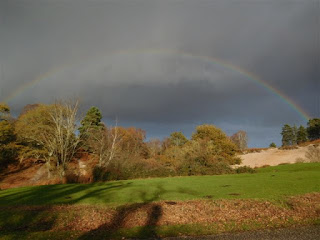What Happened
Today
It was to be out last meeting for the year 2015. The
original plan was to walk across the heath to Meyrick Park, but that idea was knocked
on the head in view of Storm Frank which was due deliver gale force winds and
lots of rain. Instead, one group of ladies met to play Mah Jong until
lunchtime. Then a group of eight met at the Meyrick Park Golf Club for lunch.
The lunch group were: Trudy B, Sue, Wendy, Tricia, Jackie,
Diane and Tony R, David.
We met at the Meyrick Park Golf Club and ate in the Pulse
Bar. And a very good meal it was too. The club occupies park of Meyrick Park,
as you might expect, but do you know how that park began? I’ve nothing to tell
you about a walk, so I might as well tell you about the park.
Until 1802, Bournemouth was just common land. However, as
a result of the Inclosures Act of 1802, hundreds of acres were put into private
ownership. Three commissioners were appointed to divide up the land and
determine who got which bit. The landed gentry were well represented by the
commissioners, but the commoners who used the land were concerned they would
lose out. They persuaded William West, a farmer at Muscliff Farm, to create a petition
on their behalf and present it to the commissioners. As a direct result, five
areas of land were set aside for the benefit of the commoners. Today, those
areas of land are called King’s Park, Queen’s Park, Redhill Common, Seafield
Gardens and… you’ve guessed it… Meyrick Park. The five areas were put in trust
by the Five Parks Charity.
I’m sure you feel wiser for knowing that.
Thanks are due to Trudy B for providing the Mah Jong
entertainment and tea after lunch.
Next Week we hope to complete the today’s planned walk.













































